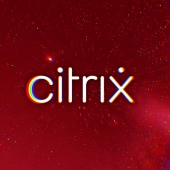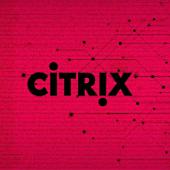-
Thousands of Juniper devices vulnerable to unauthenticated RCE flaw
An estimated 12,000 Juniper SRX firewalls and EX switches are vulnerable to a fileless remote code execution flaw that attackers can exploit without authentication.
- September 18, 2023
- 03:40 PM
 0
0
-
Windows 11 ‘ThemeBleed’ RCE bug gets proof-of-concept exploit
Security researcher Gabe Kirkpatrick has made a proof-of-concept (PoC) exploit available for CVE-2023-38146, aka "ThemeBleed," which enables attackers to trigger arbitrary remote code execution if the target opens a specially crafted '.theme' file.
- September 14, 2023
- 11:55 AM
 0
0
-
ASUS routers vulnerable to critical remote code execution flaws
Three critical-severity remote code execution vulnerabilities impact ASUS RT-AX55, RT-AX56U_V2, and RT-AC86U routers, potentially allowing threat actors to hijack devices if security updates are not installed.
- September 05, 2023
- 10:58 AM
 3
3
-
Hackers exploit critical Juniper RCE bug chain after PoC release
Hackers have started using a critical exploit chain to target Juniper EX switches and SRX firewalls via their Internet-exposed J-Web configuration interface.
- August 29, 2023
- 10:51 AM
 0
0
-
Exploit released for Juniper firewall bugs allowing RCE attacks
Proof-of-concept exploit code has been publicly released for vulnerabilities in Juniper SRX firewalls that, when chained, can allow unauthenticated attackers to gain remote code execution in Juniper's JunOS on unpatched devices.
- August 28, 2023
- 10:46 AM
 0
0
-
WinRAR flaw lets hackers run programs when you open RAR archives
A high-severity vulnerability has been fixed in WinRAR, the popular file archiver utility for Windows used by millions, that can execute commands on a computer simply by opening an archive.
- August 18, 2023
- 01:20 PM
 3
3
-
Ivanti Avalanche impacted by critical pre-auth stack buffer overflows
Two stack-based buffer overflows collectively tracked as CVE-2023-32560 impact Ivanti Avalanche, an enterprise mobility management (EMM) solution designed to manage, monitor, and secure a wide range of mobile devices.
- August 15, 2023
- 06:05 PM
 0
0
-
Industrial PLCs worldwide impacted by CODESYS V3 RCE flaws
Millions of PLC (programmable logic controllers) used in industrial environments worldwide are at risk to 15 vulnerabilities in the CODESYS V3 software development kit, allowing remote code execution (RCE) and denial of service (DoS) attacks.
- August 11, 2023
- 10:33 AM
 0
0
-
New PaperCut critical bug exposes unpatched servers to RCE attacks
PaperCut recently fixed a critical security vulnerability in its NG/MF print management software that allows unauthenticated attackers to gain remote code execution on unpatched Windows servers.
- August 04, 2023
- 04:23 PM
 1
1
-
Over 640 Citrix servers backdoored with web shells in ongoing attacks
Hundreds of Citrix Netscaler ADC and Gateway servers have already been breached and backdoored in a series of attacks targeting a critical remote code execution (RCE) vulnerability tracked as CVE-2023-3519.
- August 02, 2023
- 02:23 PM
 0
0
-
P2PInfect server botnet spreads using Redis replication feature
Threat actors are actively targeting exposed instances of the Redis open-source data store with a peer-to-peer self-replicating worm with versions for both Windows and Linux that the malware authors named P2Pinfect.
- July 31, 2023
- 11:31 AM
 0
0
-
Hackers exploit BleedingPipe RCE to target Minecraft servers, players
Hackers are actively exploiting a 'BleedingPipe' remote code execution vulnerability in Minecraft mods to run malicious commands on servers and clients, allowing them to take control of the devices.
- July 31, 2023
- 10:33 AM
 3
3
-
Over 15K Citrix servers vulnerable to CVE-2023-3519 RCE attacks
Thousands of Citrix Netscaler ADC and Gateway servers exposed online are vulnerable to attacks exploiting a critical remote code execution (RCE) bug that was previously abused in the wild as a zero-day.
- July 22, 2023
- 10:07 AM
 0
0
-
Netscaler ADC bug exploited to breach US critical infrastructure org
The US government is warning that threat actors breached the network of a U.S. organization in the critical infrastructure sector after exploiting a zero-day RCE vulnerability currently identified as CVE-2023-3519, a critical-severity issue in NetScaler ADC and Gateway that Citrix patched this week.
- July 21, 2023
- 08:51 AM
 0
0
-
New critical Citrix ADC and Gateway flaw exploited as zero-day
Citrix today is alerting customers of a critical-severity vulnerability (CVE-2023-3519) in NetScaler ADC and NetScaler Gateway that already has exploits in the wild, and "strongly urges" to install updated versions without delay.
- July 18, 2023
- 02:00 PM
 1
1
-
Critical RCE found in popular Ghostscript open-source PDF library
Ghostscript, an open-source interpreter for PostScript language and PDF files widely used in Linux, has been found vulnerable to a critical-severity remote code execution flaw.
- July 12, 2023
- 12:46 PM
 2
2
-
Fortinet warns of critical RCE flaw in FortiOS, FortiProxy devices
Fortinet has disclosed a critical severity flaw impacting FortiOS and FortiProxy, allowing a remote attacker to perform arbitrary code execution on vulnerable devices.
- July 12, 2023
- 10:40 AM
 0
0
-
Microsoft: Unpatched Office zero-day exploited in NATO summit attacks
Microsoft disclosed today an unpatched zero-day security bug in multiple Windows and Office products exploited in the wild to gain remote code execution via malicious Office documents.
- July 11, 2023
- 02:23 PM
 2
2
-
VMware warns of exploit available for critical vRealize RCE bug
VMware warned customers today that exploit code is now available for a critical vulnerability in the VMware Aria Operations for Logs analysis tool, which helps admins manage terabytes worth of app and infrastructure logs in large-scale environments.
- July 10, 2023
- 04:16 PM
 0
0
-
Critical TootRoot bug lets attackers hijack Mastodon servers
Mastodon, the free and open-source decentralized social networking platform, has patched four vulnerabilities, including a critical one that allows hackers to create arbitrary files on instance-hosting servers using specially crafted media files.
- July 07, 2023
- 12:40 PM
 0
0

























